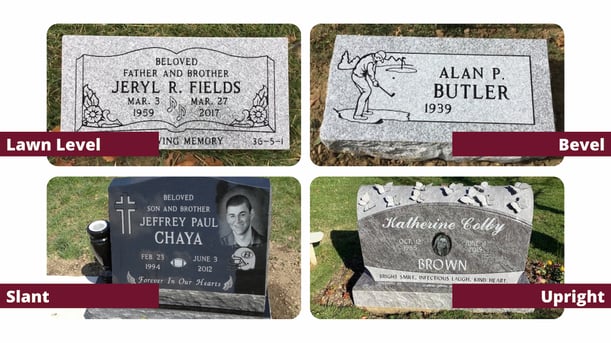There are a lot of decisions in life that will only happen once or twice—for example, planning a memorial, designing a headstone and purchasing a burial plot. Decisions like these are tremendously personal, and will affect you and your extended family for generations to come.
When planning a burial, it’s best to understand the different aspects of the process. One of the most unfamiliar details may be purchasing a burial plot.
A burial plot is the place where your lost loved one’s remains are laid to rest. To purchase a burial plot, follow these three steps:
- Choose a cemetery.
- Decide on a specific site location.
- Purchase your chosen burial plot.
To help prepare you for choosing a burial plot, we’ve detailed the costs and different options available.
How Much Does a Burial Plot Cost?
Cemetery plots can range widely in cost depending on various factors, such as:
- Cemetery location.
- Plot size.
- Available space in the cemetery and plot location considerations (different sections can have specific rules and vary in price.).
- How the remains are buried (crypt, mausoleum, etc.).
Research shows the average Ohio burial plot is around $1,200. View the chart below for averages in several different states.

A trusted memorial provider can explain these costs and help you make the best decision based on your needs.
>>> Download our Memorial Cost Guide to better understand headstone expenses and recognize value.
6 Types of Burial Plots
There are several types of burial plots for individuals, couples and families. Continue reading to determine which option makes the most sense for you or your loved one.
1. Single-Depth Burial Plots
A single-depth burial plot is one of the most common options. It is meant for one person and is marked with an individual lawn-level, bevel, slanted or upright headstone, depending on your preference and the cemetery’s rules.

2. Double-Depth Burial Plots
Double-depth burial plots are intended for two people, typically siblings or married couples.
Double-depth plots are single plots with caskets buried on top of each other. They tend to be more affordable because they only require purchasing one plot.
Keep in mind, your chosen cemetery will likely have a standard for how double burial plots are to be set.

3. Family Burial Plots
Family burial plots are used for multiple people and enable you to choose the number of loved ones depending on your needs and the cemetery’s availability.
With family burial plots, you’ll typically see the family name engraved on a large, single headstone, with smaller headstones marking the individual graves of each family member.


4. Mausoleums
Mausoleums are above ground structures with an enclosed crypt that can hold traditional caskets. If you don’t like the idea of being buried underground, mausoleums offer a cleaner and drier option.


Mausoleums can be comfortable, peaceful places to visit your loved one because they provide protection from heat, cold, and rain, and allow family members to visit in comfort year-round.
5. Columbariums
A columbarium is a public or private structure that houses cremated remains instead of caskets. It is composed of small niches that hold a single urn. The face of the niche can be personalized like a headstone—with inscriptions as well as with flower vases.

These types of burial plots are usually sacred, public places for those who do not want to keep cremated remains in a traditional urn in their home.
6. Estate Monuments
Estate monuments are typically gated or hedged areas for in-ground casket or urn burial—think of a gated estate like a cemetery within a cemetery. Most often more than one person can be buried in an estate monument, where the property is kept private with a wall, or a fence and a gate.


Northeast Ohio Cemetery Rules and Regulations for Burial Plots
While there are a number of different options for burial plots, many cemeteries have regulations for headstones allowed on the grounds. Download our Northeast Ohio Cemetery Memorial Guide to ensure your memorial is allowed at your cemetery of choice.





